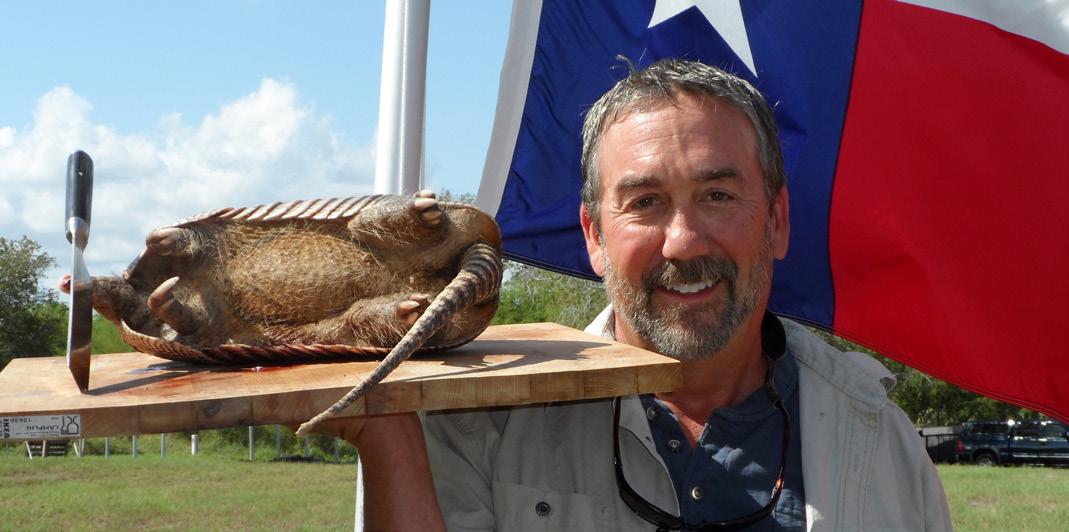
12 minute read
WARM WEATHER FAVORITES
SCOTT WITH ARMADILLO
BY SCOTT LEYSATH
Advertisement
WHEN THE TEMPERATURE RISES, I PREFER LIGHTER, less complicated dishes that require minimal time in the kitchen. Most of what I cook in the summer is done on a grill or another outdoor cooker. Keep it cool indoors and take advantage of local in-season fruits and vegetables. Just because you can buy peaches in January doesn’t mean you should. They are likely from South America and were harvested long before fully ripened, so they won’t get banged up on the long trip to the U.S.
FISH MARKET
There are many benefits to eating ripe seasonal produce. The flavor is fresher tasting than those winter peaches from Chile. The nutritional value is better when fruits and vegetables ripen naturally. They are also more affordable when they only must travel a short distance to get to you. Sourcing locally harvested fish is better than buying cheap, unregulated foreign fish that was raised in questionable waters and traveled thousands of miles to get to the America. Support our U.S. commercial fishermen, farmers and ranchers!
For those of us who have a freezer loaded with game from year’s past, summer is a good time to use up the inventory and make room for the upcoming season. Random packages of game can be ground together, along with some fat, to make burgers, tacos, meatballs, meatloaf and much more. If you are headed to the wilderness for a night or two, take along a batch of homemade burgers that have been frozen and packed for transport. Experienced campers know that it’s best to do most of the prep work at home so that more time can be spent doing fun things like hiking, fishing or just hanging around camp with a cool beverage.
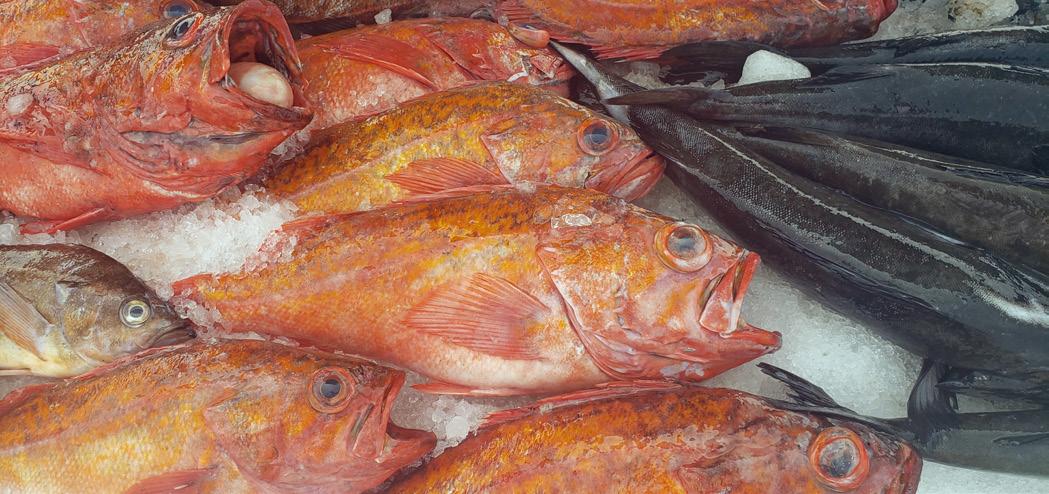
WARM VENiSON AND MUSHROOM SALAD
Mushrooms and venison are a great match, especially if you know your way around the woods and can forage, rather than shop, for local shrooms. High-dollar mushrooms such as morels and chanterelles can be gathered by the buckets in some parts of the country, but it’s critically important that you can tell the difference between the edibles and the ones that will make you really sick. When in doubt, don’t eat them. I use trimmed venison backstrap, tenderloin or hindquarter muscles for this dish.
10 mins—4 servings • 1/2 cup pecan pieces • 1 tablespoon olive oil • 1/2 teaspoon kosher salt • 1 dash Tabasco • 1 1/2 cups rare to medium-rare cooked venison, sliced across the grain • 1/3 cup olive oil • 4 cups mushrooms, thinly sliced • 2 garlic cloves, minced • 3 lemons, juice only • 1/4 cup fresh basil, chopped • 1/2 teaspoon Dijon mustard • 4 handfuls arugula • 1/3 cup Gorgonzola cheese, crumbled • 1/2 red onion, thinly sliced • 1 cup diced tomato
1. Toss pecans with 1 tablespoon olive oil, kosher salt and Tabasco. Place on a baking sheet, and place sheet in a preheated 325-degree oven. Toast pecans until darker brown, but not burnt. Remove from oven and cool. 2. Heat one-third cup olive oil in a skillet over medium-high heat. Add mushrooms and garlic and sauté for 3 to 4 minutes. Mushrooms should still be a little firm. Stir in basil, mustard, and sliced cooked venison. Heat to warm, and blend ingredients. 3. For each serving, mound arugula on plates. Spoon mushroom and venison mixture over. Top with cheese, onion, and tomato. Drizzle any remaining dressing over.
GRiLLED FiSH WiTH TOMATO AND BASiL
One of my all-time favorite foods is “real” vine-ripened tomatoes that are at their peak in the summer. There’s just no comparison between store-bought tomatoes and homegrown or those from a good vendor at a farmer’s market. While you’re at the market, grab a bunch of basil and anything else that is in season. You’re not only supporting local growers but your friends and family will thank you for an exceptional meal.
One of the challenges for home cooks is to figure out how to keep fish from sticking to the grill. There are non-stick mats or wire baskets that can be placed on the grill to prevent sticking. Keeping the grill grates clean and well-oiled will greatly reduce the potential for fish to get stuck on the grill. Make sure that the grill is hot before adding the fish. Start by placing the side of the fish that is most presentable, usually the top side, on the grill. This is the side people will see when the fish lands on the plate. You should hear the sound of searing fish immediately.
WARM VENISON AND MUSHROOM SALAD
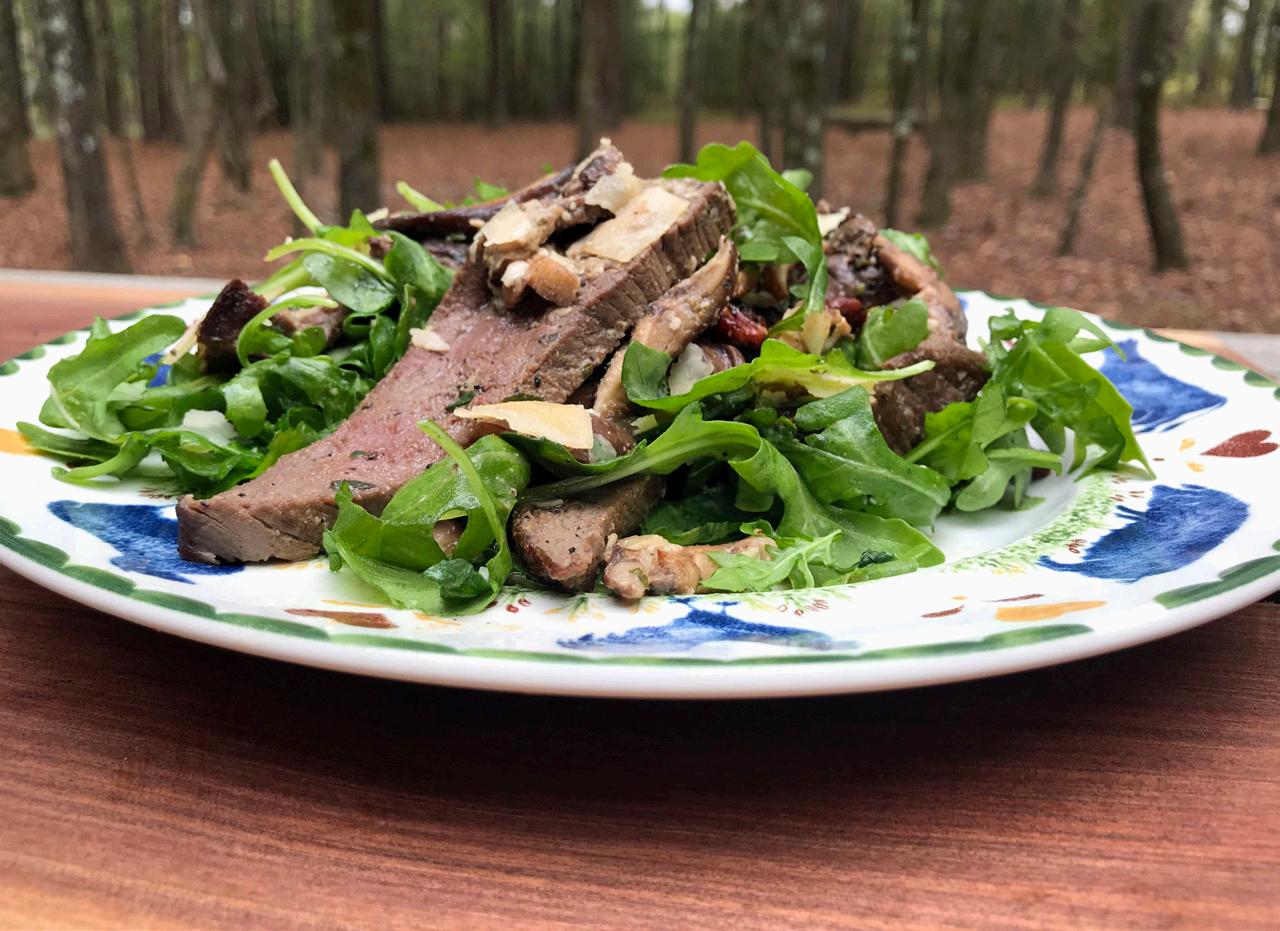
GRILLED FISH WITH TOMATO AND BASIL
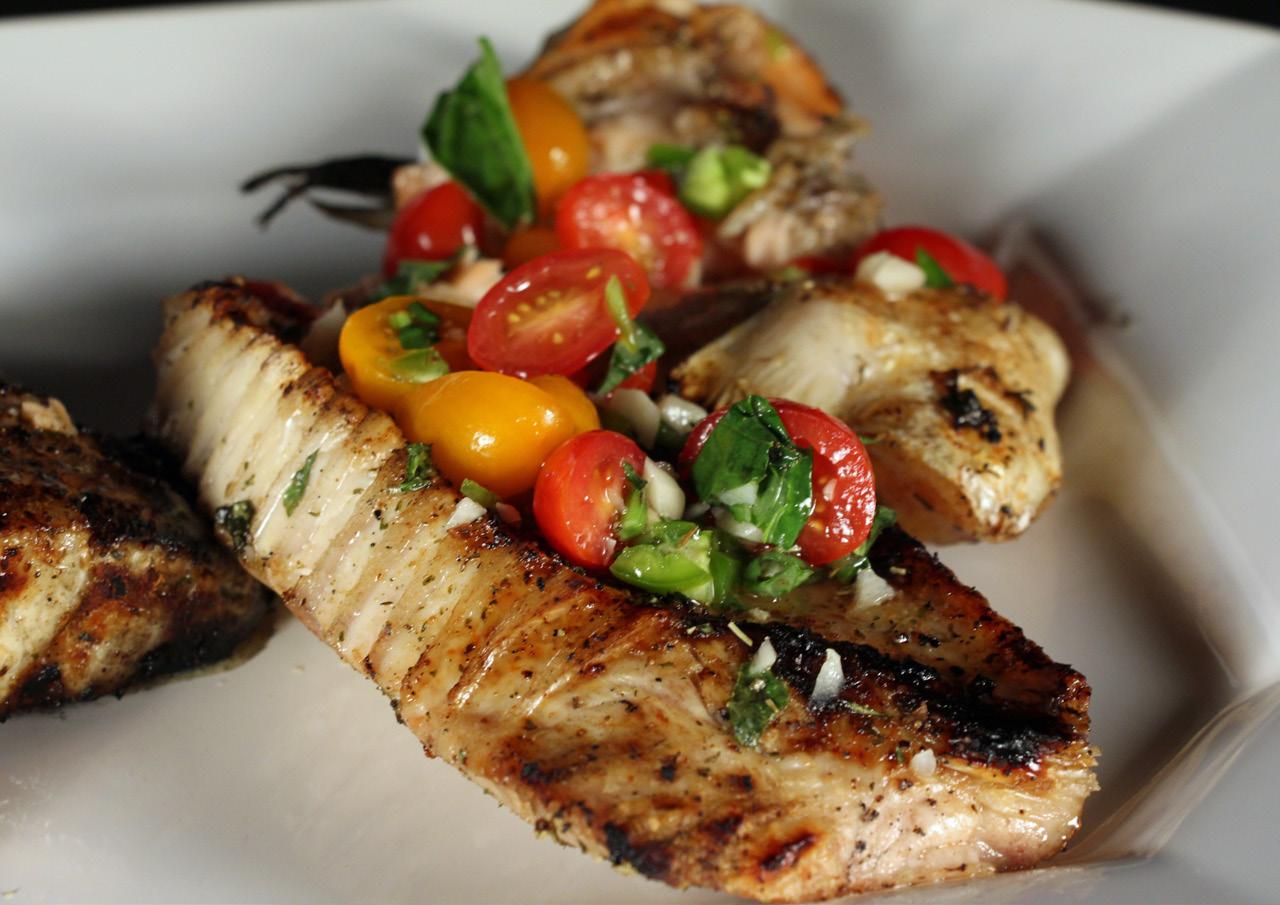
As tempting as it might be to move the fish to keep it from sticking, don’t. If it’s “stuck” to the grill, let it be. Once it’s well-marked and seared, it will move more easily. Give it a quarter turn to make a classic diamond pattern with the grill marks. Once marked, carefully give it a flip and cook for another minute or two. Just before serving, add a big squeeze of lemon or lime to make the flavors come alive.
4 servings • 4 6 to 8-ounce fish fillets • olive oil • salt and pepper • 1 tablespoon freshly squeezed lemon juice • 1/4 teaspoon Dijon mustard • 2 tablespoons capers, drained and rinsed • kosher salt and freshly ground black pepper • 2 cups vine-ripened tomatoes, any size, diced (or halved if cherry tomato-sized) • 1/3 cup fresh basil leaves, chopped • 2 cloves garlic, minced
1. Rub fish on both sides with olive oil and season with salt and pepper. Place on a whitehot grill and cook on both sides (see grilling instructions above). 2. While the fish is grilling, combine lemon juice and remaining ingredients in a bowl and gently toss to coat. Season to taste with salt and pepper. 3. Spoon tomato mixture over fish.
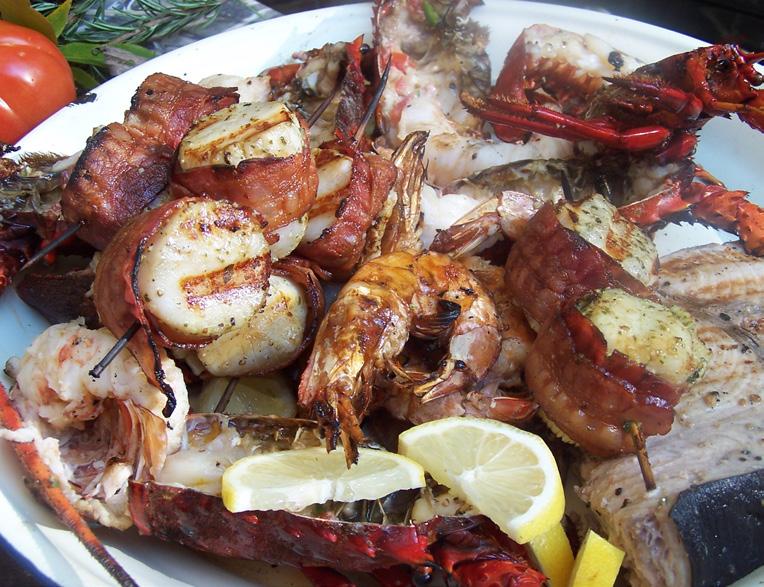
MIXED SEAFOOD GRILL
MiXED SEAFOOD GRiLL
We all have choices when it comes to seafood. There are those folks who have decided long ago that they don’t like fish. They’re “fishy.” Mishandled fish can be fishy, really fishy. As a general rule, I don’t eat fish, or anything else, that smells fishy. There’s a reason it has an unpleasant aroma and funky taste. Somewhere along the way the fish hasn’t been cared for properly. Just-caught fish from clean waters don’t smell or taste bad. If you stick them on a stringer and let them soak in ninety-degree water for hours, they will taste much worse than if they were bled and iced immediately. When you get your catch home, don’t stick them in zipper-lock bags or containers where they float around in their own fishy juices. Instead, keep whole and filleted fish wrapped in two-ply paper towels so that it wicks any exterior moisture away from the fish. When the paper towels get wet, rewrap them in dry paper towels. Your fish will last twice as long in the fridge and, when it’s time to cook, the wine, butter, and lemon that you add to the pan will be readily absorbed by the fish for a cleaner-tasting meal.
When choosing which fish to cook on the grill, choose firmerfleshed fish like salmon, tuna, and redfish. One of my favorite fish to cook is whole snapper and rockfish. Gutted and scaled, they can be rubbed with olive oil, salt, and pepper and grilled on a medium-heat grill until the flesh is flaky and moist. The flesh can be removed with a fork, fingers or pulled and loaded into a tortilla for a delicious fish taco. Wild-caught Gulf shrimp, lobster, and bacon-wrapped scallops are also great for grilling. Just like the snapper, season with olive oil, salt, pepper, and anything else you like on your fish. After they are well-marked from the hot grill, hit them again with another pinch or two of seasoning. I always give cooked fish and shellfish a liberal squeeze from a fresh lemon or lime just before serving. The acidic citrus juices will stimulate the taste buds and make the flavors come alive.
PLANK COOKED FiSH
Cooking foods on an untreated wood plank is just a bit retro, but it’s still a great way to cook fish and game. Culinary planks come in cedar, alder, maple, and hickory. Make sure that your planks are designed to be used for cooking, not roofing. Soak a plank in water for 30 minutes so that it won’t catch on fire as quickly. The smoldering wood adds flavor to the meat or fish. If you’ve struggled with fish that sticks to the grill, that won’t happen when it’s being cooked on a plank.
Fish is most commonly cooked on a wood plank, but game and domestic meats, as well as vegetables also can be plank cooked. After soaking in water, rub fish with olive oil and season fish with salt, pepper, and any other seasoning that you like with fish. Place on the plank and then place the plank on a white-hot grill. It’s best to close the lid on the grill or place a foil pan over the plank so that the fish cooks quicker from the top and bottom. There’s no need to flip the fish and I like to top it with butter, fresh herbs, diced tomato, and a big squeeze of lemon just a few minutes before it’s ready to remove from the grill.
BRAiSED AND GRiLLED DUCK LEGS
Many waterfowl hunters waste much of their ducks and geese. They’ll remove the breast fillets and discard the rest. The carcasses make great stock and the legs from larger birds are great on the grill, but they need a two- or three-hour head start before grilling. Legs and thighs are sinewy and need to be slowly cooked to make them fall off-the-bone tender. Once cooked, they can be cooled, re-seasoned, or sauced and grilled for just a couple of minutes. Your friends will want to know how in the
1. Season legs liberally with salt and pepper. Place in a lightly greased pan and place in a preheated 375-degree oven and brown evenly on both sides. The browning part is important because it will add flavor to the cooked legs and, especially if the skin is intact, it will make the skin crispy, not rubbery. Once browned, add a handful or two of rough-cut onion, celery, and carrots. The trim ends and skins of the vegetables are fine. Place the pan back in the oven to lightly brown the vegetables. Once browned, add 1 to 2 inches of broth, beer, wine, or a combination of liquids. You don’t want to cover the contents of the pan in liquid, just add enough to cover the bottom three-fourths. Reduce oven heat to 325, cover, and place the pan in the oven. 2. After 1 hour, check the pan to make sure that there is sufficient liquid. Add more if needed. Return pan to oven and after another hour start checking for doneness about every 20 minutes. When done, the meat should pull away from the bone with minimal pressure. Remove legs when tender and allow to cool. 3. The braised legs are a great appetizer when the grill is fired up. Baste with your favorite sauce and grill for 2 to 3 minutes. They can also be served alongside grilled duck breasts.
VENiSON BURGER WiTH ONiON AND BACON JAM
I prefer to save my antlered game for burgers in large chunks. When it’s burger time, I thaw it and grind it fresh. It just seems to taste better than making a bunch of patties and freezing them for grilling a few months down the road. If the meat hasn’t been properly aged and is still dripping with blood-colored liquid, place it in a colander to drain before forming into patties. They will stick together much better while cooking.
Antlered game meats are much leaner than beef. Some folks are just fine with a one-hundred percent venison burger, but I like to add about twenty percent fatty pork or beef to the mix. It makes for a juicier burger. You can also add sautéed onions, mushrooms, peppers, and garlic or cheese to add flavor and moisture.
This jam recipe is borrowed from my friend, Stacy Lyn Harris, a regular on The Sporting Chef TV show on Sportsman Channel. She’s a pro at cooking everything, including fish and game. I first had her jam on boar burgers that she prepared for the TV show. I’ve since made it several times and it’s as good on other grilled meats as it is on a venison burger.
4 servings • 4 6 to 8-ounce venison burgers, seasoned with salt and pepper • 10 to 12 strips thick-cut bacon, diced • 2 cups onion, diced • 1 1/2 cups brown sugar • 1 tablespoon whole grain mustard • 1/2 cup bourbon (see instructions below) • 1/3 cup apple cider vinegar
1. Prior to grilling the burgers, prepare the jam. In a large skillet or pot over medium heat, add bacon and cook until evenly browned. Once cooked, remove bacon and reserve. Leave bacon grease in the skillet. Add onions and sauté until golden brown, about 8 to 10 minutes. Stir in brown sugar and cook for 2 to 3 minutes. Remove pan from heat and stir in whole grain mustard, bourbon, and cider vinegar. NOTE: Keep flammable liquids like bourbon away from open flames or high heat until the liquid has been incorporated into the dish. 2. Reduce heat to low and simmer for 20 minutes or until the jam is dark to medium brown and thickened. Jam can be stored in the refrigerator for several weeks. 3. Once burgers are cooked to desired doneness, place in buns and top with jam. ★
FISH ON CEDAR PLANK
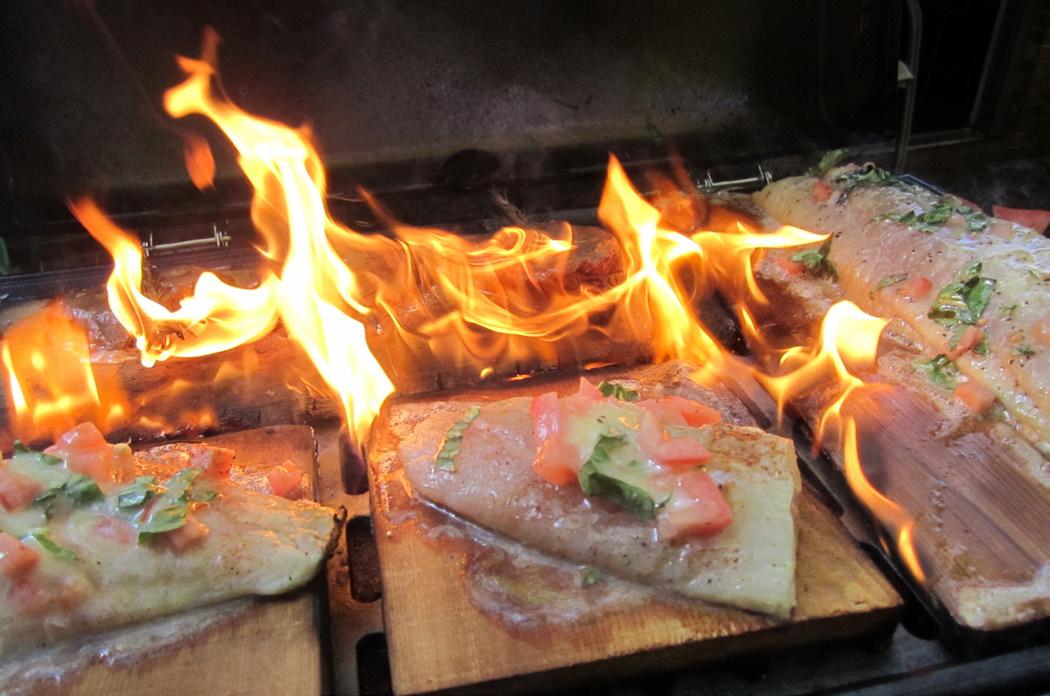
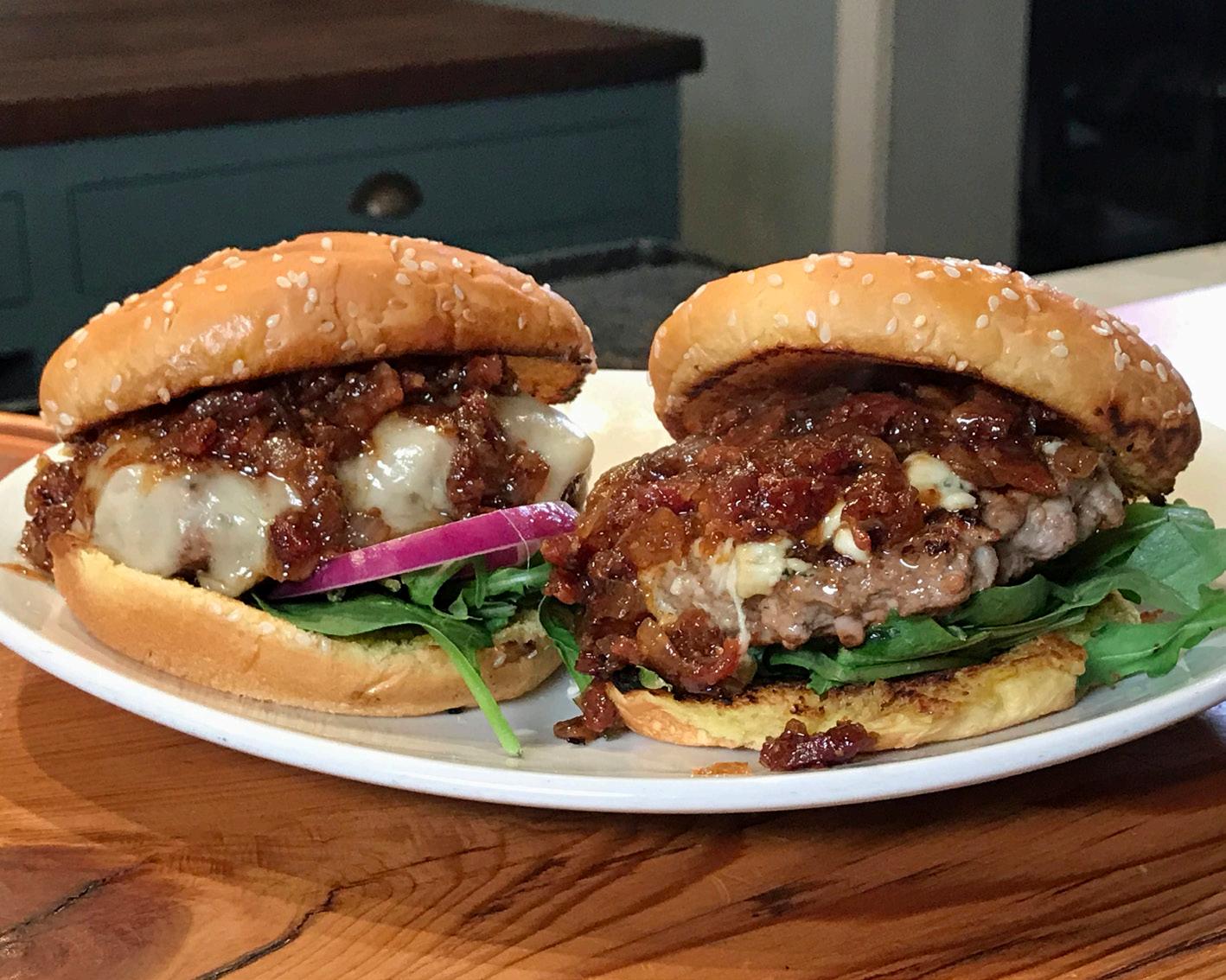
BRAISED AND GRILLED DUCK LEGS
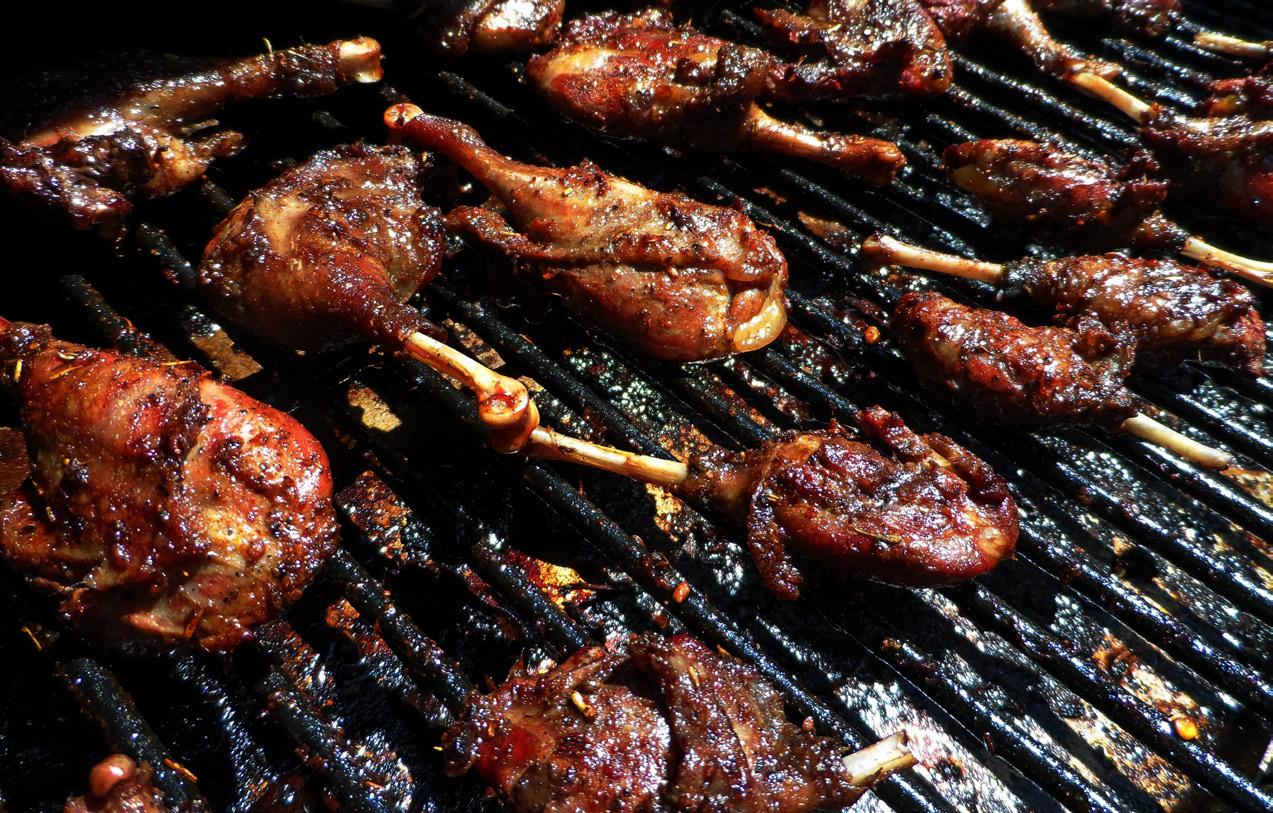
VENISON BURGER WITH BACON JAM









